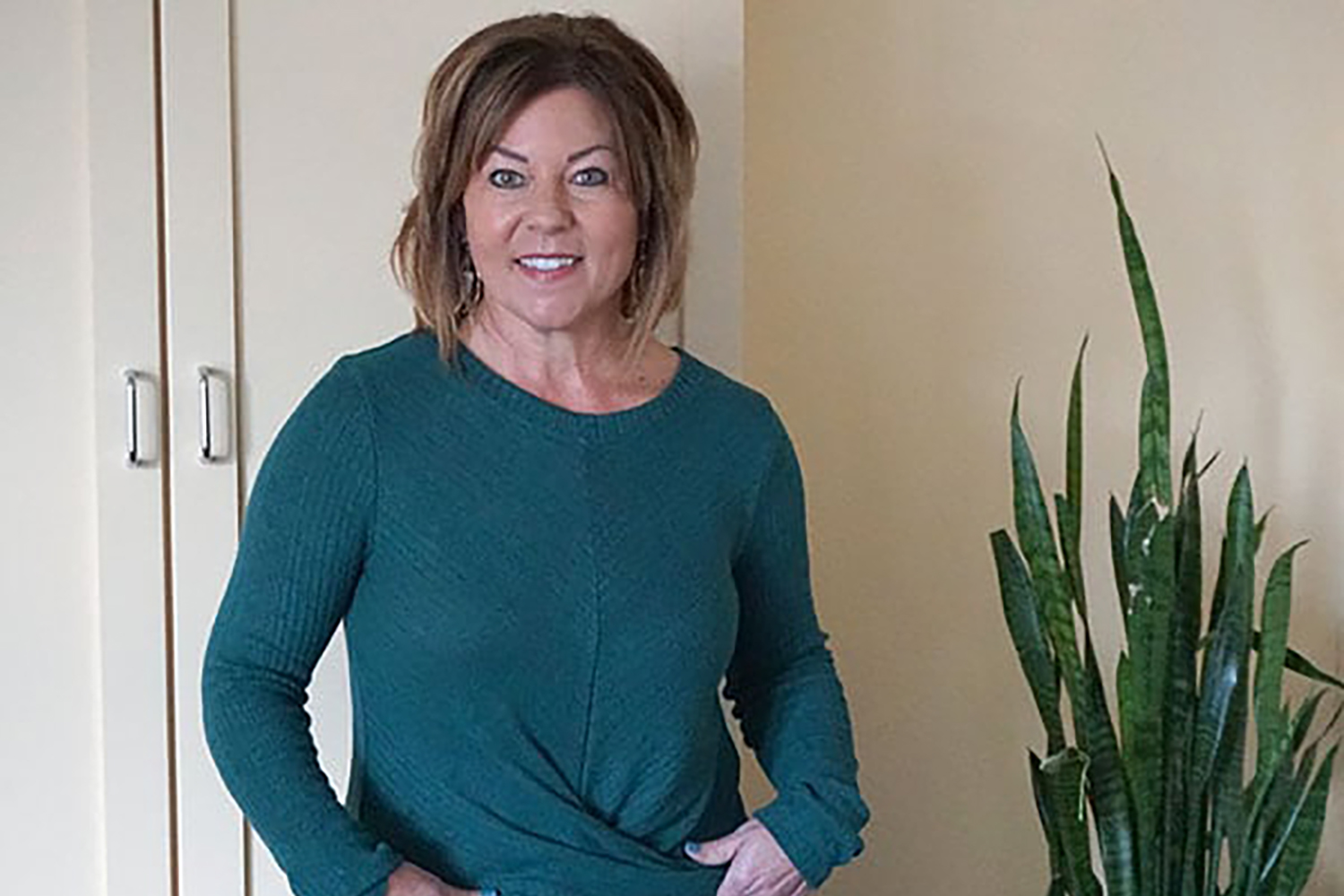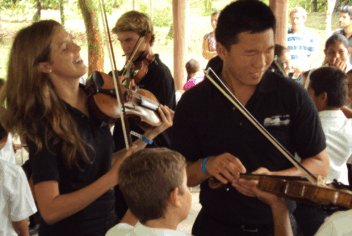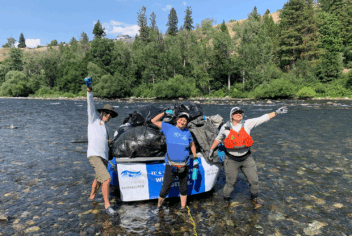Compassion is the fuel that runs NIA. Our staff’s deep engagement in the community, volunteering, and supporting nonprofits is readily on display in the financial hub of Nonprofits Insurance Alliance and the office of Kim Aday. She is NIA’s CFO and has worked at the organization for 23 years. We caught up with Kim to learn about the growth of NIA, which started 30 years ago in Santa Cruz, CA, and now insurers 20,000+ nonprofits in 32 states and D.C.
A nonprofit insurer is not something you run across every day. Why is 501(c)(3) status important to NIA?
The process of becoming tax exempt took place when I first came on board as a staff accountant over two decades ago. The most obvious reason we obtained 501(c)(3) status is that we serve nonprofits exclusively. We are the nonprofits sector’s own insurance company, so it was important that we are also a tax-exempt organization.
What were some early challenges?
Not long after I started here, we were successful in obtaining the funding we needed for surplus to create our risk retention group and captive reinsurer—both of which are also tax-exempt. And then everything changed. We went from one organization just writing in California to being registered in multiple states with tons of new regulatory reporting requirements.
Another early challenge is unique to how we operate. A big piece of insurance means working with actuaries and reserving for claims. I think it was particularly challenging to find actuaries who really understood the nonprofit organizations we were writing so they could properly assess if we were reserving appropriately. So, there was a bit of a learning curve we had to work through.
Why was it challenging for the actuaries to understand nonprofits?
I know there was quite a perception—and some of this still exists—that if an organization is a nonprofit, they must not have the expertise to really know how to run an organization. And so, there’s maybe not as much faith in nonprofits as there is in a traditional for-profit corporation. Some of that trickles over to understanding the risks. So, some of the reactions we received were, Whoa! You’re writing that? I’m not going to touch that!
Do you still get that reaction toward nonprofits?
I think some do have that reaction. There are insurance companies now who are denying lines of insurance coverage to certain types of nonprofits, like animal rescues. Other carriers don’t want any part of it. They just stop when they hear it’s an animal rescue. NIA on the other hand has done a lot of underwriting for animal rescues.
Other commercial insurers avoid writing Improper Sexual Conduct or insuring organizations that have volunteers involved with the community and with youth. Still other carriers tend to stay away from subjects like how to properly train nonprofit staff and volunteers, how to handle writing those risks, and how to handle the claims from those risks as well.
How does the organization decide how to best serve nonprofits?
I think that the diversification of the risks we write certainly helps with ensuring our growth is slow and steady. First, we’re only writing things that we understand. Building expertise takes time. Next, our pricing doesn’t have a lot of volatility: we offer fairly-priced insurance which is reliable for nonprofit budgets. NIA is very careful in how we underwrite risks and how we price them properly, because ultimately, we want to be here for the long-term for our nonprofit members.
Our growth has been fairly steady, but there’ve certainly been times where we’ve had more growth than others, especially if commercial insurance companies are deciding to exit the market. Our reputation had grown through word-of-mouth as we built the confidence of the brokers out in the community who had never seen an organization like ours before or policies like ours.
Can you describe the ways NIA works with our members that is different from other insurance companies?
What really differentiates us is that we work with our members on not just flexibility of payments, but also to understand their funding streams. When we have members who are working within the constraints of funding from local government, those funds can be delayed. We will work with insureds to recognize that they have this funding—it’s just delayed. I think a lot of carriers would just cancel that policy. We won’t. I’ve encouraged the team to work with our nonprofits to communicate, think outside the box, and come up with payment plans when a member has hit a rough spot with funding or staffing and needs to split up the next couple of payments. If the nonprofit has had a good payment history, we’ll offer flexible options and work with them.
Since NIA provides a dividend to its members insured by NIAC[1], one of the most popular questions is when nonprofits insured by ANI would receive a dividend.
ANI does have a dividend plan in place that’s been approved by the board for if and when issuing dividends to ANI members is a possibility. The board has not yet determined that we’re ready to pay out dividends because ANI is constrained by a few different things that NIAC has not been subject to in its growth. These are just factors that are inherent in being a risk retention group in Vermont.
NIAC, for example, being a California corporation, is not subject to regulation by the Department of Insurance, nor does it pay premium taxes. ANI is subject to Vermont regulatory requirements governing risk retention groups, which means it has to pay licensing fees, registration fees, and premium taxes. Those premium taxes are about 3% of our gross written premium. For this year for example, we’re paying at least $1.8 million in premium taxes. NIAC doesn’t have to pay that, but ANI does. So it’s taken ANI longer to get ramped up, although now it’s certainly showing signs that it will grow probably faster than NIAC will.
But in order to be able to sustain that growth, we need surplus to support the growth. We’ve got to get to a place where we feel that ANI’s surplus is sufficient to support our current members as well as any future growth before we will issue dividends.
As the CFO of a very successful nonprofit organization, do you have any financial advice to offer nonprofits?
It’s important for nonprofits to be very realistic about their budgeting and spending capabilities and to incorporate sound advice when possible. I know that expertise can be expensive, whether it’s for the board or staff, but it can help the organization approach their financials thoughtfully and make sure there’s oversight and enough review in place with sufficient controls and reporting. The tricky balance a lot of nonprofits face is to be fiscally responsible without becoming so consumed that it takes away from the mission.
How would you describe your journey to NIA and the point you knew you wanted to stay?
When I graduated from college, I was a finance major with a property management background. I knew I didn’t want to go into public accounting necessarily. I felt like it was too small of a world. I got the finance degree and really thought, I need something that’s going to lead me into a place where it’s big-picture. I’m very well-suited to the work now, but really, at the time, I thought, Well… this is just insurance.
But when I landed here, one of the things that made me stay was the challenges that came from us expanding, which were very interesting to me. The work also matched up to my personal life, because I was involved in coaching youth sports and interacting with the nonprofit community, and I thought, Wait a minute—I can work all day and still be connected to helping better the community. And it just became a very feel-good job! I’ve been so excited and inspired by my experiences here working with our nonprofit members!
Since you started, what initiatives has the Finance department led to propel NIA forward as an innovative organization?
One of the things that we’ve done over the years is work towards becoming more paperless. A lot of this was definitely environmental—because we want to reduce the impact on the environment—but also, as we embrace a more electronic world with more remote employees who telecommute, it became important that we adapt.
One of the first initiatives that I championed was to encourage our audit firm, who would come out from North Carolina a couple of times a year for weeks at a time, to work remotely. We put a lot of effort into enabling them to securely log in to our network from their office. Over the years we’ve made lots of baby steps in improving paper intensive functions—like electronic billing statements for members and the accounts payable function, which used to use a lot of paper. I’m happy to say we no longer accept paper invoices.
What causes speak to your heart?
Anything that supports youth, especially when it comes to athletics. Housing and feeding is so important, but so is exercise, health, and wellness. It’s imperative for kids to be active.
And I’ve been particularly impressed with the work of one of our nonprofit members in Southern California that does rehabilitation and employment for former gang members. The founder, who runs the organization, talks about his interactions with folks who were out on the street, and how those interactions have evolved into a great organization with activities like a bakery, t-shirt making group, tattoo removal, and a lot of other neat work offering employment to former gang members. It’s a really tough job, and the impact our members make on our communities is so critical. That’s something we want to make sure continues, and that’s why we’re here at NIA.
Kim Aday is the Chief Financial Officer (CFO) for the Nonprofits Insurance Alliance. She has served NIA since 1997, in various positions throughout the finance department. Prior to joining the group, Ms. Aday was an accountant for Marina Village Real Estate. Kim holds a BS in Finance from San Jose State University and has completed the Volunteer Income Tax Assistance program through the San Jose State University College of Business. Her volunteer work has included the California State PTA and coaching youth soccer and softball teams.
[1] Dividends are based on premiums paid, length of continuous coverage, and claims history. Payment decisions are made by the respective board of directors of each insurer.





